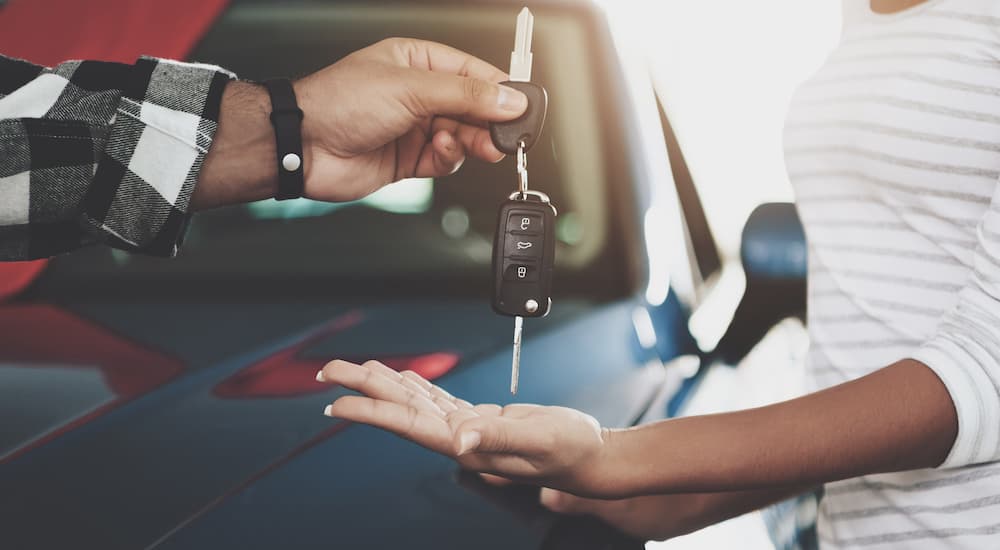Used car buyers have more shopping tools at their fingertips than ever before, yet most are still frustrated and utterly confused about which car is right for them. It turns out that finding the best used car isn’t any easier, even with the dozens of online classified sites and snazzy smartphone apps available to consumers today.
Why is that? Sometimes there’s just too much information to sift through, and it leaves buyers feeling overwhelmed. There’s a name for it – analysis paralysis – and with the dizzying array of options, many would-be savvy consumers throw up their hands and default to the least stressful option, an option that isn’t always ideal. This applies even more specifically to buyers with bad credit or those on a tight budget.
It’s hard enough to find a reliable and inexpensive used car when you have $10,000 or less to spend. But when you add in deceptive ads and unreliable sellers looking to fleece vulnerable consumers, what seems like a massive pool of high-quality options is whittled down to only a small handful of questionable old cars with even more questionable pedigrees. Instead, we propose that you skip the stress and follow these 8 steps to find a reputable dealership and a quality car you can rely on.
#1 – Don’t Trust Sketchy Sellers.
This is the cardinal rule of used car shopping on a shoestring. Know that you’re easy prey for deceptive sellers looking to capitalize on your financial hardship. Some buyers won’t hesitate to roll the dice on a risky loan that’s inflated to accommodate a bloated sales price, insane fees, and a hefty profit margin. If you’re feeling pressured or told it’s a “one time” offer, our advice is to run away. Better yet, check google reviews before you even walk through their door. There are plenty of trustworthy dealerships out there, and taking the time to find them will pay off.
#2 – Watch out for Subprime Loan Terms.
A big part of the allure surrounding sketchy corner retailers is their ability to offer in-house financing. They welcome you in with balloons and giant signs promising instant approval, but once they have you hooked on a vehicle, the bloom quickly comes off the rose. Carefully read the loan terms and know what you’re getting yourself into because it’s extremely common for these loans to exceed the value of the vehicle once interest is factored in. Don’t drive off the lot already upside down. Instead, find a dealer that can show you a pathway to rebuilding your credit.

#3 – Get to Know CARFAX
Buying a used car on the older end of the age and mileage spectrum doesn’t mean you’ll end up with a clunker. If your search has narrowed to one or two specific cars, we recommend pulling a CARFAX report. CARFAX aggregates data from insurance companies and state motor vehicle agencies to provide buyers with a vehicle history report. It will tell you whether the car you want has a salvage title. You’ll also learn how many owners it has had, as well as details on insurance claims from major accidents. Reputable used car retailers will offer buyers a free CARFAX report, and the ones that don’t likely have something to hide.
#4 – Take Advantage of the Test Drive.
When buying an older used car, the test drive is critical. It’s during a lengthy test drive that you’ll uncover potential mechanical problems, such as engine knocking and pinging, transmission slippage, or hindered performance. Make sure the radio is off during your test drive, and whenever possible, include a stretch of highway to evaluate acceleration and identify any excessive road noise. We also recommend inviting a car savvy buddy to go with you, especially if you’re a car buying novice.
#5 – Be Wary of Aftermarket Products.
This is a difficult subject to broach because, in some cases, buying an extended warranty to cover major mechanical repairs is one of the best decisions you’ll ever make. With that said, extended vehicle service contracts vary significantly in quality, and some are downright deceptive. Carefully review the terms of any service contract you’re considering and make sure it’s underwritten by a nationally recognized insurance company.
#6 – Take Your Time.
Many subprime buyers with less than $10k to spend consider themselves at a disadvantage. In their haste to find financing and avoid missing out on a specific car, they can fall victim to pushy sellers. Know that just because you have limited funds and potentially “bad” credit, it doesn’t mean your business isn’t valuable. It’s the opposite: dealers tend to enjoy the biggest profit margins with subprime buyers. Trust us; you have plenty of options. Kick as many tires as you need to in order to find the right car.
#7 – Be Realistic About Your Options.
Yes, you have options, but your options aren’t unlimited. The fact is, if you have under $10,000 to spend, you’re going to end up with a high mileage older car. Our advice is to focus less on the model year and instead pay attention to the vehicle’s overall quality. Look for evidence of excessive wear-and-tear, which comes in the form of significant rust, engine noise, dirty oil, and worn tires. If the vehicle was properly maintained, it doesn’t matter how old it is. Also, we recommend letting go of any expectations for aesthetics. If the car starts reliably every morning, you won’t care if it has some dings or if the upholstery is a little faded.

#8 – Consider Using a Single Source.
Next to the car itself, your biggest concern should be where you end up buying it. Going the route of a private seller is especially risky when you’re buying an older car. Once you drive away, you own it, including any inherited mechanical issues. Sadly, some private sellers simply aren’t truthful or may not even know what they are selling, so the odds of ending up with a lemon are much higher. Hedge your bet and hitch your wagon to a reputable used car retailer that specializes in working with budget buyers. Google is your best friend here – follow the 5-star reviews.
There are High-Quality Used Cars and Used Car Dealers
You’d be surprised at the number of credit-challenged buyers entering the used car marketplace every day. According to Nerd Wallet, buyers with credit scores between 501 and 600 make up nearly one-third of all buyers at any given time. As a used car buyer with bad credit, it’s nearly impossible to avoid a higher interest rate, but you can still end up with a great car if you align with a reputable seller.
Competent automotive retailers have financing professionals whose job is to help buyers rebuild their credit. Find a dealer with experience lending to subprime buyers and specifically enlist their help locating a loan with favorable terms. You want to try and avoid becoming upside down (owing more than the car is worth), but even more important, you need a finance manager who understands your max monthly budget.
Our best and final advice is simple: don’t enter any sales contract that asks you to commit to a payment you can’t afford. Avoid telling yourself you’ll make it work because the surest way to dig a deeper financial hole is to skip a payment or default on your loan altogether. You’re better off buying a less expensive car and using the loan term to slowly and steadily rebuild your credit.



